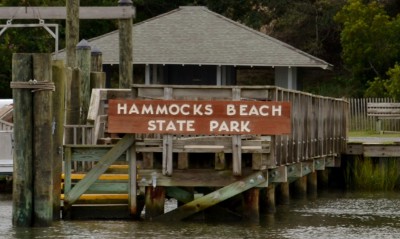Reprinted from the Tideland News
RALEIGH — Final approval of state funds to begin the acquisition of about 290 acres for an addition to Hammocks Beach State Park in Swansboro was mysteriously pulled from the N.C. Council of State agenda yesterday morning.
Supporter Spotlight
According to sources, the decision for the governor’s “cabinet” not to consider the item was technical and bureaucratic in nature, not a problem of substance. One person close to the issue said it was a “miscommunication” between the “environmental people” and the “property people” in the state attorney general’s office.
As a result, Charlie Peek, spokesman for the N.C. Division of Parks and Recreation confirmed Tuesday, “We fully expect it to reappear on the agenda in April.”
It’s purely a legal issue, he said, one that should be resolved soon. But Peek said the details of what the problem is were not clear to him, and he couldn’t immediately offer an explanation.

The Council of State, which must approve state land acquisitions, was to have voted on the proposed allocation of $6.96 million to buy about 200 acres; and The Conservation Fund, through its North Carolina chapter office, has committed $3.1 million more to buy the remaining 90 or so acres, state director Bill Holman said last week.
The fund is expected to work with the state parks system over the next couple of years to enable the state to buy the land, according to Holman. In the meantime, the 90 acres are to be conserved.
Supporter Spotlight
Under an agreement struck last year between the state and the property owners, John H. Hurst and Harriet Turner Hurst, a lawsuit that has held up the addition to the park for years ended. The state Superior Court, where the case has resided since 2010, awarded the property to Hurst and Turner, who are to sell the land to the state for about $10 million.
Hammocks Beach State Park is currently made of four different areas: the 30-acre mainland, which is the hub and home of the visitors’ center and ferry dock; Bear Island, an 892-acre largely unspoiled barrier island with a ferry landing, an ocean beach with lifeguards and a restroom and concession facility; Huggins Island, a 225-acre maritime island, home to a historic Civil War battery, at the mouth of the White Oak River in Bogue Inlet; and about half of 23-acre Jones Island, seven miles northeast of Bear Island at the mouth of White Oak.
The acquisition would represent about a 25 percent increase in the total size of the park and close to a 1,000 percent increase in the mainland area.

Holman said Tuesday he was disappointed the item was pulled from the agenda, but he remains excited about the addition. “This has been a priority of the state parks system for years and a top priority of the environmental and conservation community, too,” he said. “It’s never a done deal until the deeds have been handed over, but it’s exciting to be this close.”
The Conservation Fund is an environmental nonprofit with a dual charter to pursue environmental preservation and economic development. Since its founding in 1985, the organization has protected more than seven million acres of land and water in all 50 states, including parks, historic battlefields, and wild areas. It works with community and government leaders, businesses, landowners, conservation nonprofits and other partners to create innovative solutions that integrate economic and environmental objectives.
The state Parks and Recreation Trust Fund Authority had approved a $1.06 million allocation for the purchase of the Hammocks Beach land during its Dec. 5 meeting, bringing its contribution to about $3.9. The other $3 million was included in the state’s 2014 budget. That money is to come from the sale of general obligation bonds.
Friends of Hammocks and Bear Island, the park’s volunteer support group, is trying to raise some or all of the money that would be used to repay The Conservation Fund, David Pearson, the group’s president, said last week. Onslow County, he said, has agreed to contribute but has not officially done so yet, and the friends will be seeking other partners.
Once the council of state approves the purchase, the state will have 90 days to close the deal with Hurst and Turner for $10 million, plus the taxes owed.
Once the deeds are in hand, Pearson said, the friends and the state will begin to update the master plan for Hammocks Beach State Park to reflect the addition. “It’s going to be very important for the community to get involved, to tell us what they would like to see happen,” he said. “That’s who all this has been done for: the public.”
His dream, Pearson has said, is to have a boating access site, similar in scope to the regional facility in Emerald Isle, camping, trails and much more on what some have called the most beautiful undeveloped property left along the state’s coastline. In addition, great swaths of the land should remain undisturbed, and some sections might be restored to its previous natural state.
On the council of state agenda, it simply puts it this way: “Acquisition of this property provides protection of water quality and subaquatic vegetation in Queen’s Creek and protection of scenic resources along the Intracoastal Waterway. The proposed acquisition will greatly expand the ability to provide environmental education and interpretive activities.”
“Once we actually get the deeds, we will be ecstatic that this land will finally be a part of Hammocks Beach State Park,” Pearson said.








